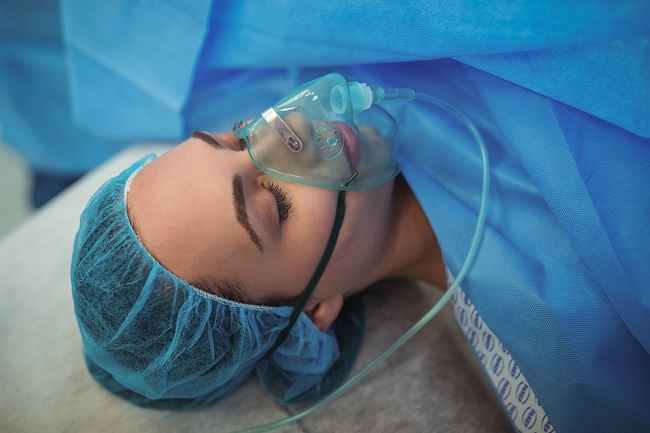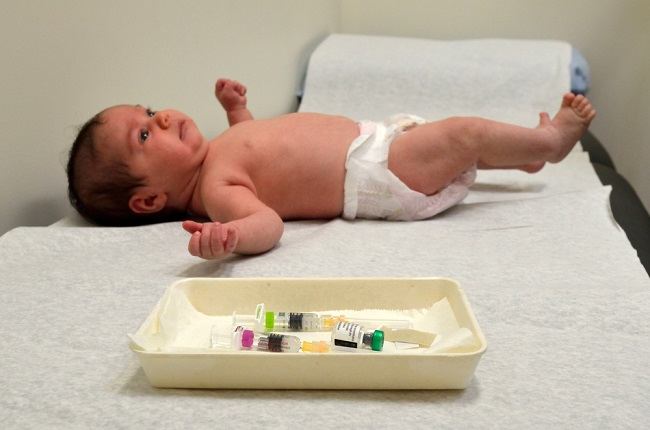Pregnant women may feel fear before the delivery process. However, pregnant women don't need to worry because actually the normal birth process is not as scary as imagined. how come. Let's know and understand the normal delivery process so that pregnant women are ready to go through each stage.
The process of normal delivery or childbirth usually occurs when the gestational age has entered 37-42 weeks. However, this condition is difficult to predict, so no one knows for sure when labor will occur.

As the day of the expected birth (HPL) approaches, the pregnant woman's body will prepare itself to face the normal birthing process. This begins with hormonal changes marked by a decrease in the hormone progesterone, while levels of other hormones such as oxytocin, estrogen, and prostaglandins increase.
These hormones function to trigger contractions in the uterus and make the cervix softer and thinner for the fetus to pass easily.
Normal Childbirth
The normal childbirth process experienced by every woman is not the same. Some have a long process, some are short, some start with strong contractions, some even start with premature rupture of the membranes.
But for sure, every woman who will give birth will go through three stages of labor and each stage has a different sensation. The following are the stages in the normal delivery process:
Stage 1: strong and regular contractions
In the early stages of labor, pregnant women will experience mild to strong contractions that appear regularly. This stage is divided into three phases, namely:
- Initial phase
In addition to contractions, pregnant women may experience muscle cramps around the pelvis and uterus, back pain, leaking of the amniotic fluid, and mucus discharge with blood from the vagina due to the opening of the cervix.
In this phase, try doing activities that can relax you, such as taking a warm bath, taking regular breaths, listening to music, getting a massage, or walking.
- Active phaseContractions that appear will be stronger, regular, and more often felt in this phase. The back pain that is felt is also getting worse. In addition, you may start to feel nauseous and even vomit. If the amniotic fluid is intact in the early stages, it is more likely to rupture at this stage.
- Transition phase
In this phase, the contractions have started to feel very strong and sharp. This is marked by the baby's head starting to move down from the uterus to the birth canal. The urge to push has also begun to be felt.
Stage 2: The process of pushing and delivering the baby
At this stage, you will feel the urge to push with each contraction. This condition indicates that the baby is ready to be born. The baby's head has also been seen to appear in the mouth of the vagina (crowning).
You may experience severe pain during contractions as the baby's head stretches the tissue around the vagina. This stretching and pushing process can even be strong enough to cause a tear in the vagina.
Therefore, at this stage pregnant women need to regulate their breathing and follow the guidelines of the midwife or doctor in order to be able to push properly. If needed, the midwife or doctor may perform an episiotomy to widen the birth canal.
This process of pushing the baby out of the birth canal can take a few minutes to several hours. But in general, this process takes about 2 hours in women who have given birth for the first time. Whereas in women who have given birth, the process of pushing the baby will usually take faster, which is about 1 hour.
If the process of giving birth to this baby takes longer than the one mentioned above, it can be said that the pregnant woman is experiencing prolonged labor. Some of the causes are because pregnant women are starting to get tired or because they get an epidural anesthetic injection.
At the end of this second stage, pregnant women's struggles will pay off. When the little one is born, pregnant women can finally meet directly with the baby they have been waiting for. If the condition of the little one is healthy, the doctor or midwife may help the mother to initiate early breastfeeding (IMD).
Stage 3: expel the placenta
Feelings of relief may already be felt at this stage. However, the labor process is not over yet, you know. The doctor or midwife who helped deliver the baby still has to remove the placenta from the uterus.
In this phase, contractions will reappear to help the process of expulsion of the placenta and stop bleeding. However, pregnant women need not worry. The contractions that appear are mild and do not cause severe pain as before.
Every woman's experience during normal childbirth is not the same. Some women say that contractions feel like intense cramps during menstruation. Some say that contractions feel like the body is being squeezed with all its might.
Then, is all normal childbirth painful? This is not entirely true, because in fact excessive pain during childbirth can be relieved if the pregnant woman undergoes various preparations before giving birth properly.
Mothers-to-be don't need to be afraid of a normal delivery. Regardless of the pain that will be faced, a woman's body is naturally well prepared for a normal delivery process.
Even the pain of normal childbirth will be paid off with incomparable happiness when pregnant women hold their beloved baby for the first time.
To ensure that the normal delivery process can run smoothly, it is important to undergo regular pregnancy check-ups to the obstetrician. While undergoing an obstetrical examination, pregnant women can ask the doctor about a possible delivery plan, including whether they can give birth at home.









